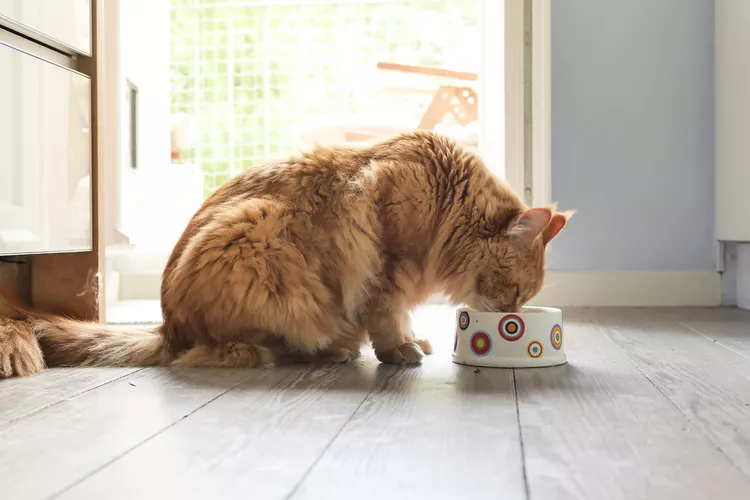5 Reasons to Check Cat Food Expiration Dates

When companies are issuing recalls on cat and dog food, pet owners are rightly concerned about the safety and quality of what they serve to their four-footed family members. Whether serving pet food past the labeled expiration date is harmful or not has become a topic of discussion.
Pet foods in the United States are not required to have "Best By" dates (or expiration dates) labeled on their packaging, but many companies do so to inform consumers and stores how long they can ensure the advertised quality of their products. Certain factors like degradation and packaging strength can affect how long these wet and dry pet foods can last past the recommended "use by" dates on the packaging.
Still, just because a package of unopened cat food—wet or dry—has outlived its recommended use date doesn't mean it's unsafe. Instead, you should look for a few things that could be wrong with the contents including lower nutritional value, contamination, spoilage, and degrading of preservatives. Here's how to identify these common problems with pet food that has passed its shelf life.
Nutritional Quality
The shelf life of a pet food is defined as the time frame the manufacturer is able to guarantee the nutritional values it advertises on its nutritional facts label, and this can vary greatly by brand and type of food (whether it's wet or dry).
If you find yourself with an older can or bag of food, though, it doesn't necessarily mean it's gone bad or lost significant nutritional quality—but you probably shouldn't rely on products that are many months past their recommended "Best By" date.
Even if the food has not been opened, does not smell bad, and has no signs of spoilage or contamination, the food may have lost some of its nutrition because of the natural breakdown of preservatives and fats. Feeding your pet this type of food could result in deficiencies in their diets, which could pose serious long-term health risks if continued.
Contamination
Pet food packaging is designed to prevent contamination, but some types are more susceptible to problems than others. Permeable packaging could expose food to moisture, insects, mold, and other contaminants, and the risk of this happening increases as time goes by—especially in biodegradable packaging.
Always be sure to check food for pests, mold, and other contaminants before giving it to your pets as these could make your cat sick. This is true even before the "Best By" date, but you should especially check for signs like an "off" smell or discoloration to avoid feeding your pet bad food.
Fat and Spoilage
You'll find fat in pet food because it's essential for cats, but it can get rancid over time, even in dry food. Of course, you can't judge a food's quality by smell alone—many pet foods, especially wet cat foods, smell fairly pungent.
However, if you're used to a particular brand or type of food, you'll notice the product smells slightly off, especially if you're looking for it because the item has passed its recommended shelf life. Canned food isn't likely to spoil past the "Best By" date, but its shelf life is technically only a year from production time.
Degrading of Preservatives
Preservatives are supposed to help keep cat food fresh, yet the preservatives themselves can degrade over time. That means they lose their ability to prevent spoilage, mold growth, and microbial growth.
Some pet foods are preservative-free, but if your brand uses them, you should try to use it within the recommended shelf life to ensure the preservatives are still doing their job.
The "Best By" or "Use By" dates are most important in foods that contain preservatives because that's typically how a company will gauge its product's shelf life.
True Meaning of Package Dates
There are no federal regulations that bar grocery stores and food markets from selling products that are past their recommended "Best By" date. But most stores do have policies that throw out these products once they pass their recommended shelf life. They often put overstocked items on sale if a batch is almost past its "Best By" date.
Fresh food, which is a bit of a luxury item, is an exception to this rule because it may come with an actual expiration date. But packaged items like canned and dry pet foods don't actually have "expiration dates" at all—unless specifically noted.
The only federal law mandating this type of labeling is one that stipulates that if a food is to be dated, the date must also be accompanied by a clear label of what that date represents. Most companies post a "Best By" date because that's how long they can guarantee the quality of their promised product, but it's by no means a scientifically sound way to judge whether or not the product has gone bad.